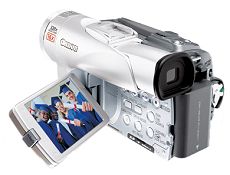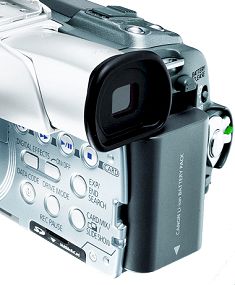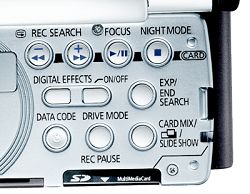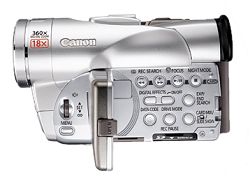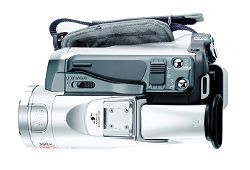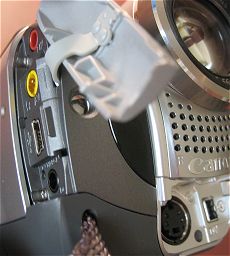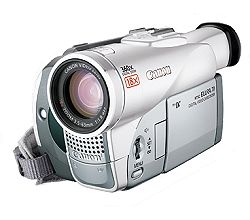Optura Watchdog
Introduction
|
> top of page < |
Canon Optura 40 vs. Elura 70 Comparison
Part One by Chris Hurd
The Canon Optura 40 and 30 models share the same chassis and nearly the same body design as the Canon Elura 70, 65 and 60 models. The primary differences between these Optura and Elura models are that the Optura has a 2.2 megapixel CCD compared to the Elura's 1.3 megapixel CCD; the Optura's primary color filter compared to the Elura's complimentary color filter; and a few other significant operational differences and features. This article explores most of the pertinent external characteristics between the Optura 40 and Elura 70 single-CCD consumer DV camcorders. The second half covers the critical internal differences governing performance, which truly delineates one model from the other.
First, a brief overview of the differences between the Optura 40 and 30, as well as the Elura 70, 65 and 60. The Optura 40 and 30 share the same 2.2 megapixel CCD and many of the same features; the primary difference between these two models outside of a few very minor operational details is that the Optura 40 has a slightly longer optical zoom and is packaged with a wide-angle adapter. The Elura 70 and 65 are likewise very similar; the model 70 has a slightly longer optical zoom and is packaged with a wide-angle adapter and a high-capacity battery. The Elura 60 has a slightly shorter optical zoom compared to the model 65; and lacks an S-video jack, high-resolution 16:9 recording and the Advanced Accessory Shoe (a standard shoe is included in its place). All three Elura models share the same 1.3 megapixel CCD. From a distance, it might be a challenge to discern all seven Optura and Elura models from each other. However a closer examination reveals the significant external features which delineate the highly similar Optura 40 and Elura 70 camcorders.

Since they're located on a block on the back side of the camcorder, the menu access button, menu select wheel, and manual exposure toggle button on the Optura 40 will be easier for most folks to access. These controls fall within easy reach of the right thumb when the camera is gripped properly in one's right hand.
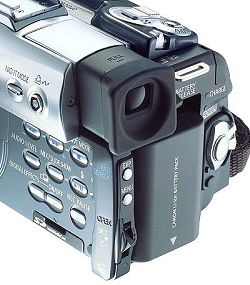
The zoom control slider, still photo record button and card/tape mode switch are all grouped together on the top at the right rear of the Optura's body. In the same vicinity on the Elura, this operations cluster is composed of the zoom control slider, still photo record button and Direct Print button. The AE program mode / Easy Recording switch on the Elura is just above the power switch / record button housing. On the Optura, the program mode switch is found on the tape transport door on the right side.
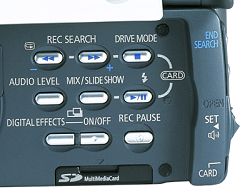
The operations panel behind the flip-out LCD display share many of the same card camera mode functions and tape transport controls on both camcorders. Some camera functions are different, however. On the Optura 40, the focus mode toggle button and the one-push Night Shot button are positioned elsewhere on the camcorder body for easier access. The Secure Digital flash memory card slot is in the same location on both models, as shown above.
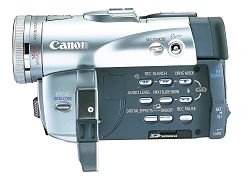
A profile view demonstrates the different locations on the camcorders for the dedicated Night Shot mode button and Direct Print button (on the side above the LCD display, just ahead of the small viewfinder on the Optura 40), and menu access button and menu select wheel (on the side, just in front of the LCD display on the Elura 70).
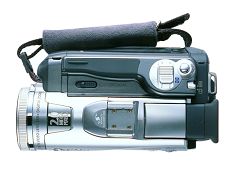
From above, the Optura 40 and Elura 70 appear nearly identical with only minor differences in color, button bezels, and body moldings.
Front End Differences
The Optura 40 sports a large, knurled manual focus ring around the lens housing. A single button on the left front side of the camcorder battery toggles the focus control mode between manual and automatic (hold the button in for a couple of seconds to toggle the Infinity Focus mode). Although manual focus control is a included in the Elura, the feature is not as intuitive. Instead of a traditional focus ring around the lens, the control is embedded in the menu select wheel on the left front side of the camcorder body. Once manual focus control is toggled by a button under the flip-out LCD display, the menu select wheel functions as the focus control.
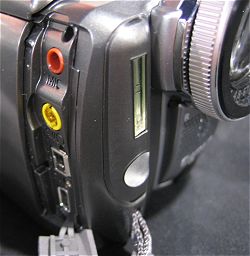
A/V input and output jacks are also slightly different between the Optura 40 and Elura 70. Both models have an input / output panel behind a rubber cover on the right front side of the camcorder body. The red stereo audio mic input mini-jack, the yellow analog A/V input/output mini-jack and USB 2.0 mini-B jack are housed in this panel on both camcorders. On the Elura 70, this panel also includes the 7.4 volt DC power connector, while on the Optura model, the DC power connector is located just below the battery well on the back of the camcorder body. The DV jack on the Elura 70 is housed on a hidden panel below the onboard microphone grille along with the S-video jack, just like its cousins in the Canon ZR series camcorder line. On the Optura 40, the DV jack is just above the USB mini-B jack on the right front side input / output panel. The S-video jack is further back on the right side of the camcorder, behind a removeable panel which covers it and the CR-2025 time/date battery.
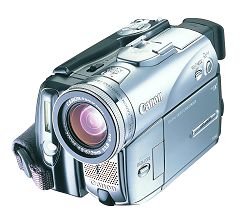
The other significant front-end difference is the Optura 40's built-in rapid-fire still photo flash, mounted to the right of the lens. The Elura 70 does not include a built-in flash. Instead, the Canon VFL-1 external photo flash / video light can be mounted to the Elura 70's Advanced Accessory Shoe. Both the Optura 40 and Elura 70 incorporate a built-in white LED light, mounted to the right of then lens, to augment the camcorders' low-light shooting modes.
Finally, on the left side in front of the flip-out LCD display, the Optura 40/30 has one button which serves as a toggle for the automatic, manual and infinity focus modes, as well as the data code display toggle when the camcorder is in the VCR (playback) program mode. In this same left front side position on the Elura 70/65/60 is the dual-function menu access / AE program mode button and the menu select wheel On the Optura 40/30, the menu button and select wheel are located on the back of the camcorder body.
On to Part Two of this article.
Back to the Articles Menu
Thrown together by Chris Hurd
Please direct questions to the DV Info Net Community Forums.
Where to Buy: These dealers are authorized DV Info Net sponsors... | |||
|
|
|
|
|
|
|
|
Please support this site by making your purchases through them. Thanks! | |||
©1998-2008 DV Info Net
The Digital Video Information Network
San Marcos, Texas
A boy without mischief is like a bowling ball without a liquid center.

